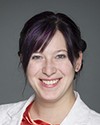Thank you, Mr. Chair.
When I was a student, there was a focus on clinical assessment. It was said that questions accounted for 70% of that assessment. You had to take the time to assess the patient well and this was done through questions alone. The physical and visual examination, where the patient is touched, made up 20% of the assessment. Additional tests such as blood tests or X-rays made up the remaining 10%.
One often gets the impression now that the opposite happens when you go to a hospital emergency ward to see a doctor. There they ask you questions during one or two minutes, you are examined for a minute or two, and then you are sent for a multiple series of tests, blood tests, lab tests, X-rays, and so on.
Dr. Cline, can you tell me what you think of that? Perhaps the same problem exists in traditional medicine, where physicians take less and less time to question a patient and carry out an in-depth clinical exam. If a physician took the time to question the patient, he or she could have a better idea of what is going on.

